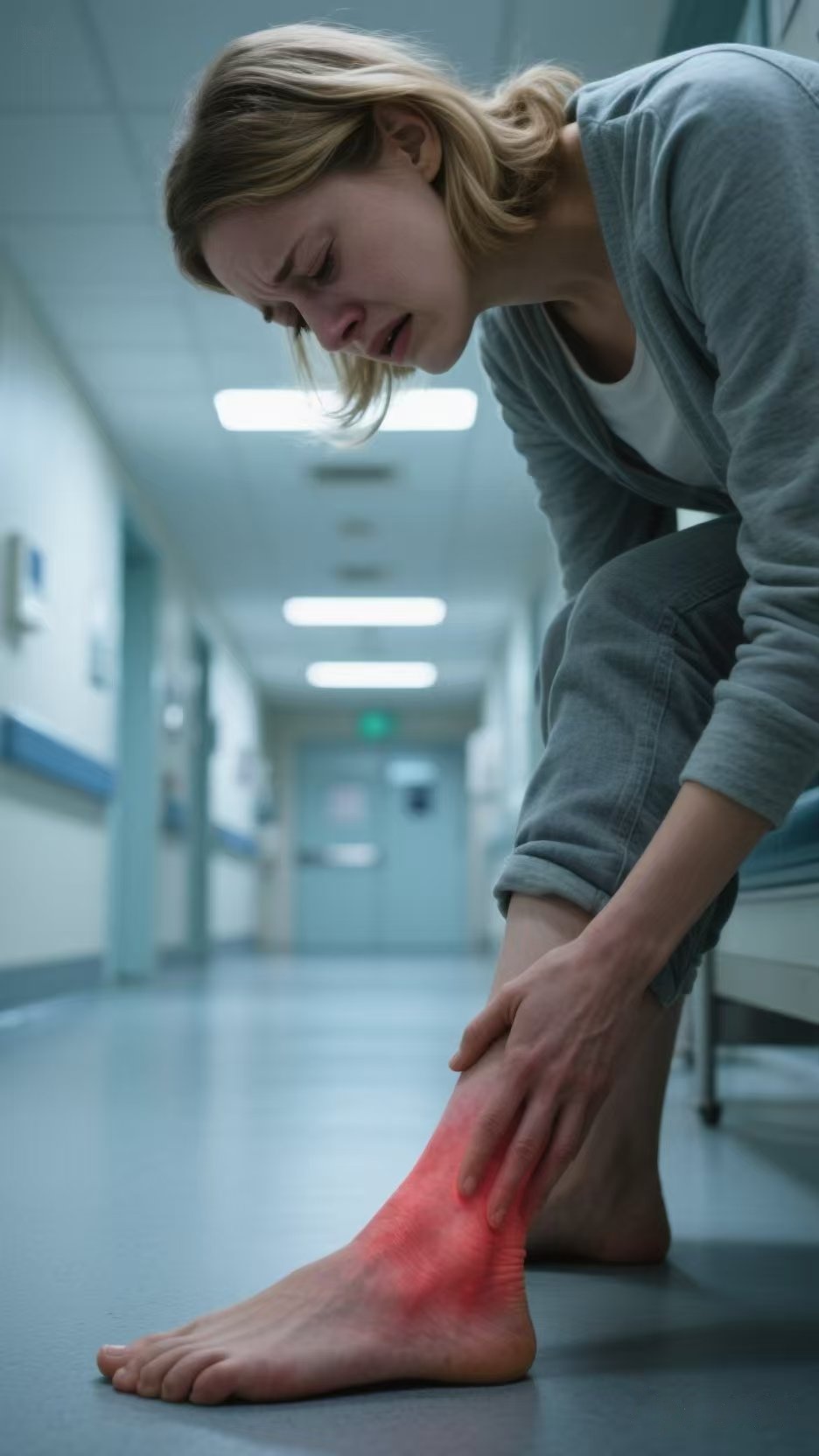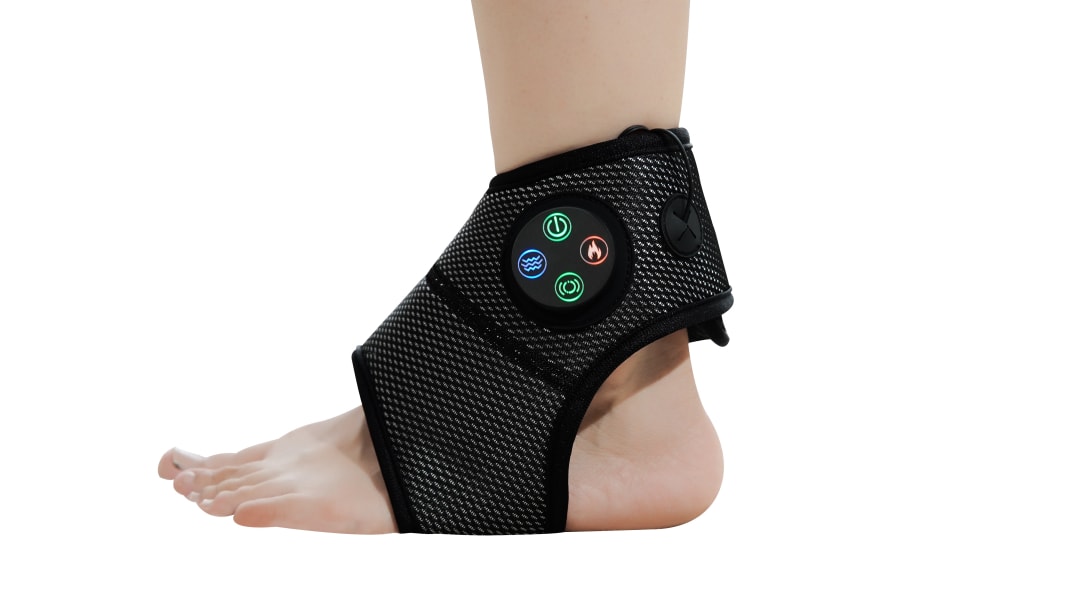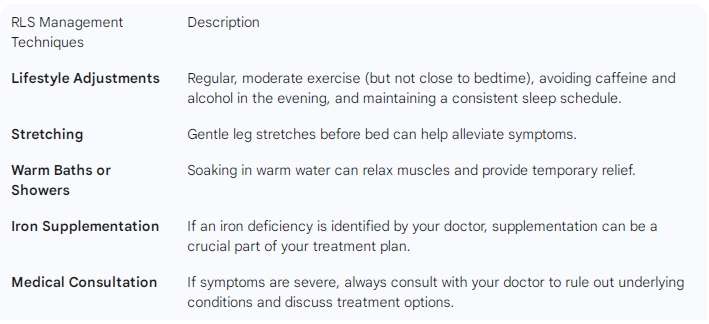Leg & Foot Massager for RLS Relief
- By Grace
- Updated on
For many middle-aged and elderly individuals, those unsettling sensations of crawling, tingling, or an irresistible urge to move their legs, especially at night, are all too familiar. This is the reality of Restless Legs Syndrome, or RLS. It's a condition that can seriously disrupt sleep and overall quality of life, leaving sufferers desperate for relief. Naturally, questions arise: could a simple home remedy like a therapeutic leg device offer a solution?
I often hear from people looking for practical ways to ease RLS symptoms without always turning to medication. While some users report that air compression, heating, or vibrating devices can indeed bring about temporary relief, others find the effect less than satisfactory, suggesting alternatives like drugs or stretching. There's also a belief that continuous use might lead to some improvement for certain individuals, but results truly vary from person to person. As a consultant for family health products, I believe it's crucial to explore these claims with a balanced perspective. Let's delve into what RLS is, how these devices might help, and what realistic expectations we should hold.
What is Restless Legs Syndrome (RLS) and Its Impact?
Restless Legs Syndrome, often referred to as Willis-Ekbom disease, is a neurological sensory-motor disorder characterized by an uncontrollable urge to move the legs, usually accompanied by uncomfortable sensations. These sensations are often described as creeping, pulling, itching, tingling, or aching deep within the legs. For many, these symptoms worsen in the evening or night, or when resting, making sleep incredibly difficult to achieve and maintain.
The impact of RLS extends far beyond just annoying leg sensations. Chronic sleep deprivation can lead to daytime fatigue, impaired concentration, mood disturbances, and a significant reduction in overall quality of life. For middle-aged and elderly people, who may already face other health challenges, RLS can be a particular burden, exacerbating existing conditions and making daily activities feel like an uphill battle. It’s a real challenge to navigate, and finding effective relief becomes a top priority.
Understanding the nature of RLS—its neurological roots and its impact on rest—is the first step in appreciating why people seek various forms of relief, including non-pharmacological options like a comforting home massager.
How a Leg and Foot Massager Can Help with RLS: The Science
So, how might a therapeutic leg device potentially soothe RLS symptoms? The theory centers around a few key mechanisms. Firstly, massage can improve blood flow and circulation in the legs, which some researchers believe might help alleviate symptoms, especially if they are related to circulatory issues. Devices offering capabilities to improve circulation often employ compression or kneading techniques to encourage this.
Secondly, massage provides a competing sensory input. When the brain receives pleasant sensations from the massage, it can temporarily override or distract from the uncomfortable RLS sensations. This sensory gating mechanism is why some individuals report immediate, albeit temporary, relief. A device with vibration, for instance, provides constant, low-level stimulation that can effectively mask the internal discomfort. It’s not a cure, but it can be a welcome reprieve.
Different modes contribute to this effect:
- Vibration: Provides consistent sensory input that can distract from RLS sensations.
- Air Compression: Mimics the feeling of external pressure, which some RLS sufferers find comforting, and also enhances blood flow. This is where a good compression sleeve or a full leg recovery sleeve can come in handy, offering targeted pressure.
- Heat Therapy: Helps relax muscles and can provide soothing comfort, further reducing muscle tension that might exacerbate RLS discomfort.
While the precise neurological pathways for RLS symptom relief through massage are still being researched, the combined effects of improved circulation, muscle relaxation, and sensory modulation offer a plausible explanation for the temporary comfort many users experience.

Reported Benefits of Using a Foot Massager for RLS
Based on user testimonials and health product observations, a home massager's most consistent benefit for Restless Legs Syndrome (RLS) is temporary relief from uncomfortable urges. While not a cure, this brief calm can be invaluable, especially before sleep. Regular use also helps with overall relaxation and stress reduction, which can indirectly manage symptoms since stress often worsens RLS. Some users even report enhanced sleep quality due to this temporary relief and relaxation. The key reported benefits include: temporary symptom alleviation, muscle relaxation, improved circulation, stress reduction, and, for some, enhanced sleep quality. However, it is crucial to manage expectations, as the results can vary significantly from person to person, and some may find the effects insufficient, leading them to seek other remedies.
Types of Leg and Foot Massagers and Their Applications
The market for therapeutic leg and foot devices offers various technologies to meet the needs of individuals, especially middle-aged and elderly people with Restless Legs Syndrome (RLS). The vibrating foot massager is a popular option, using oscillating plates for continuous sensory input that can distract from RLS sensations. Alternatively, leg compression sleeves and systems use inflating airbags to enhance circulation, reduce swelling, and improve lymphatic drainage, which may indirectly ease RLS symptoms.
Other options include Shiatsu and kneading massagers, which use rotating nodes for deep muscle relaxation. Water jet massagers combine warm water and jets for a soothing, spa-like experience. Many modern massagers also feature infrared heat therapy, which helps dilate blood vessels and relax muscles to ease tension. When choosing, consider the sensation your RLS presents and what type of relief you prefer—be it continuous pressure from a compression system or pure distraction from a vibrating tool.

Tips for Using a Foot Massager Effectively in RLS Management
To maximize the benefits of a home massage device for Restless Legs Syndrome (RLS), a consistent and holistic approach is key. Timing is everything; many sufferers find that using the device for 15-30 minutes right before bedtime helps calm their legs and prepare for sleep. Experiment with different durations and intensities to find what works best for you. Remember that a massager is part of a broader strategy, not a standalone cure. Combining device use with other known RLS management techniques can yield better results.

Conclusion
So, can home massage devices truly soothe the symptoms of Restless Legs Syndrome? The honest answer is: for many, yes, they can provide significant temporary relief and improve overall comfort. While a leg and foot massager is not a cure for RLS, it stands out as a promising non-pharmacological tool that can offer a welcome reprieve from the uncomfortable sensations, particularly beneficial for middle-aged and elderly individuals seeking comfort.
The science points to mechanisms like improved circulation, muscle relaxation, and sensory distraction as reasons for this relief, whether through a gentle vibrating tool or a robust device designed for circulation. However, as is common with many personal wellness tools, the effectiveness can vary greatly from person to person. Some may find profound temporary comfort, while others might feel the effects are minimal.
My advice, as someone dedicated to helping you find balanced and fulfilling wellness habits, is to approach the use of a home massager with realistic expectations. Consider it a valuable adjunct to a holistic RLS management plan that includes lifestyle adjustments and, when necessary, professional medical guidance. Investing in a quality device that suits your specific needs—perhaps one with heat, compression, or strong vibration—can be a thoughtful step towards reclaiming restful nights and more comfortable days. Remember, consistency is key, and finding what truly brings you peace is what matters most.
Frequently Asked Questions (FAQ)
Can a foot massager reduce Restless Legs Syndrome symptoms?
Yes, for many individuals, a home massager, particularly those offering vibration, heat, or compression, can provide temporary relief from the uncomfortable sensations of Restless Legs Syndrome. They work by providing a competing sensory input, improving circulation, and relaxing leg muscles. However, the degree of relief varies significantly from person to person, and it is generally considered a temporary measure rather than a cure.
What are the overall health benefits of using a leg and foot massager regularly?
Regular use of a therapeutic device can offer several general health benefits beyond RLS symptom relief. These include improved blood circulation in the lower limbs, reduced muscle tension and soreness, alleviation of everyday fatigue, stress reduction, and promotion of overall relaxation. For many, it contributes to a sense of well-being and can aid in better sleep quality.
Can a home massager reduce swelling in feet and ankles?
Absolutely. Many devices, especially those designed with air compression (like a leg compression sleeve or a device for circulation), are highly effective at reducing swelling in the feet and ankles. By applying gentle, rhythmic pressure, they help to improve blood flow and lymphatic drainage, which can significantly decrease fluid retention and discomfort. This benefit is particularly valuable for individuals who spend long hours standing or sitting, or for those experiencing mild edema.




